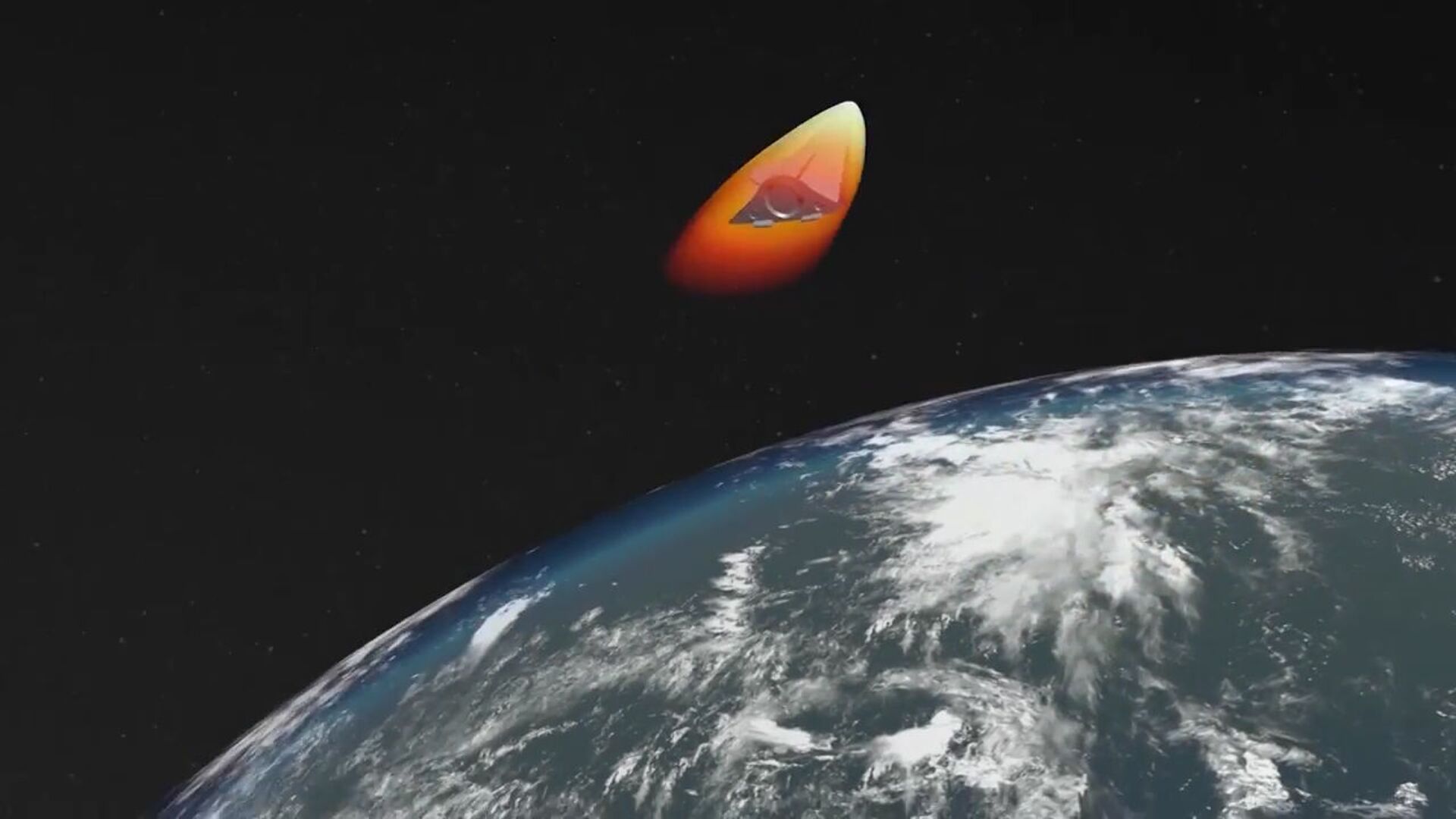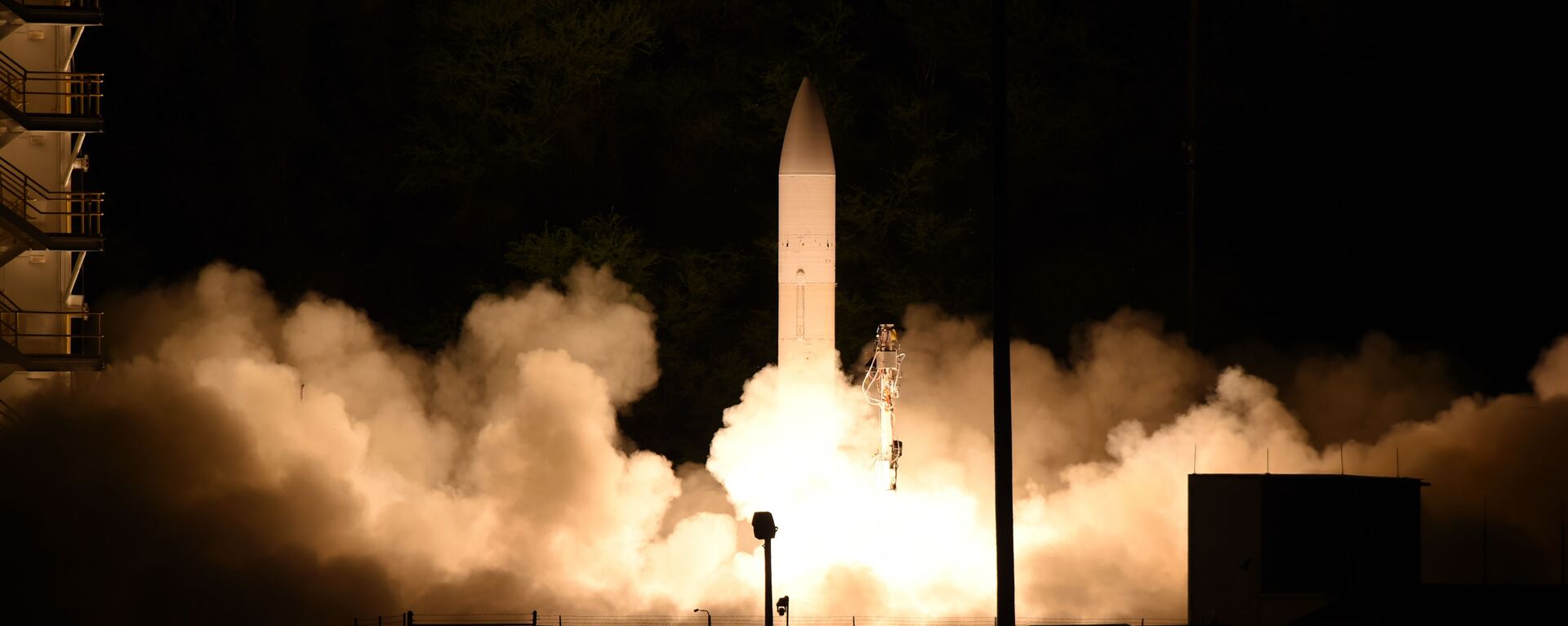https://sputnikglobe.com/20221002/russian-hypersonic-missiles-superior-to-anything-natos-got-french-media-says-1101439924.html
Russian Hypersonic Missiles Superior to Anything NATO’s Got, French Media Says
Russian Hypersonic Missiles Superior to Anything NATO’s Got, French Media Says
Sputnik International
Russia and China became the first countries to field strategic hypersonic weapons systems, with Moscow putting the Kinzhal (‘Dagger’) missile into operation in... 02.10.2022, Sputnik International
2022-10-02T13:48+0000
2022-10-02T13:48+0000
2022-10-02T13:48+0000
military
hypersonic
le figaro
russia
us
nato
https://cdn1.img.sputnikglobe.com/img/107572/02/1075720290_0:0:1280:720_1920x0_80_0_0_e9de6a029553b9401647730bfc719034.jpg
Russian hypersonic missile systems are more advanced than anything being fielded by the North Atlantic Alliance today, France’s Le Figaro has reported, echoing sentiments expressed by Russia’s president in a speech last week.The French newspaper characterized Russia’s hypersonic weaponry as its main strategic asset, capable of flying at incredible speeds and maneuvering while in flight. It pointed specifically to the Avangard hypersonic glide vehicle – a weapon deployable as a part of a multiple independently targetable reentry vehicle (MIRV) payload aboard Russian intercontinental ballistic missiles.“Russia undoubtedly has more modern weapons than the NATO countries. The United States has lagged behind in the field of hypersonic missiles, and Moscow’s nuclear arsenal is being replenished with more powerful and destructive projectiles,” Igor Delanoe, deputy director of the Moscow-based Franco-Russian Observatory, said.In his speech announcing partial mobilization last month, Vladimir Putin accused Western officials of discussing “the possibility and admissibility of using weapons mass destruction – nuclear weapons – against Russia.”“I would like to remind those who make such statements regarding Russia that our country has different types of weapons as well, and some of them are more modern than the weapons NATO countries have. In the event of a threat to the territorial integrity of our country and to defend Russia and our people, we will certainly make use of all weapon systems available to us. This is not a bluff,” Putin said.The Russian president unveiled five new strategic weapons in a speech to lawmakers in 2018, among them the Kinzhal and the Avangard, plus the Poseidon nuclear-powered and nuclear-armed drone submarine, and the 9M730 Burevestnik (‘Petrel’) nuclear-powered, nuclear-armed cruise missile.The Chinese military also possesses hypersonic weapons. In August, Russian-Indian defense joint venture BrahMos announced that it may create a hypersonic missile by 2027 or 2028. North and South Korea, France, Japan, Australia and India are also researching the cutting-edge class of weaponry.The Pentagon has tasked US defense contractors with developing at least six hypersonic weapons designs for the Army, Navy, Air Force, and DARPA’s Operational Fires program, but to date none have been fielded. The US military has also pitched laser and dust-firing flak guns meant to defeat Russian and Chinese hypersonics, as well as the use of stratospheric balloons to monitor and track their launch.Russia got a head start on its hypersonics program thanks to Soviet-era research in the field starting in the early 2000s, after the Bush administration unilaterally scrapped of the Anti-Ballistic Missile Treaty – a 1972 Soviet-US agreement which placed severe limitations on the creation of anti-ballistic missile defenses and intended to stop the arms race.Russia’s military doctrine forbids nuclear weapons from being used unless the country is targeted by enemy nuclear attack first, or a conventional attack so severe that it is deemed to threaten the existence of the state. The United States does not place such restrictions on its nukes, and “reserves the right to use” them on a preemptive basis, even against non-nuclear armed adversaries.
https://sputnikglobe.com/20220915/japan-us-to-expand-cooperation-on-hypersonic-missile-defense-systems---defense-ministry-1100791890.html
https://sputnikglobe.com/20220705/pentagon-exploring-stratospheric-balloons-to-track-hypersonic-weapons---reports-1096985645.html
russia
Sputnik International
feedback@sputniknews.com
+74956456601
MIA „Rossiya Segodnya“
2022
News
en_EN
Sputnik International
feedback@sputniknews.com
+74956456601
MIA „Rossiya Segodnya“
Sputnik International
feedback@sputniknews.com
+74956456601
MIA „Rossiya Segodnya“
hypersonic, le figaro, russia, us, nato
hypersonic, le figaro, russia, us, nato
Russian Hypersonic Missiles Superior to Anything NATO’s Got, French Media Says
Russia and China became the first countries to field strategic hypersonic weapons systems, with Moscow putting the Kinzhal (‘Dagger’) missile into operation in late 2017, and the People’s Liberation Army following suit by unveiling the DF-ZF hypersonic glide vehicle in 2019. The US expects delivery of its first hypersonic weapons in 2023.
Russian hypersonic missile systems are more advanced than anything being fielded by the North Atlantic Alliance today, France’s Le Figaro has
reported, echoing sentiments expressed by Russia’s president in a speech last week.
The French newspaper characterized Russia’s hypersonic weaponry as its main strategic asset, capable of flying at incredible speeds and maneuvering while in flight. It pointed specifically to the Avangard hypersonic glide vehicle – a weapon deployable as a part of a multiple independently targetable reentry vehicle (MIRV) payload aboard Russian intercontinental ballistic missiles.
“In this specific area, Russia is indeed one step ahead of its NATO adversaries,” the Gaullist newspaper conceded. The paper added that Russia and China proceeded to develop hypersonic missiles in response to NATO’s efforts to construct a missile defense shield.
“Russia undoubtedly has more modern weapons than the NATO countries. The United States has lagged behind in the field of hypersonic missiles, and Moscow’s nuclear arsenal is being replenished with more powerful and destructive projectiles,” Igor Delanoe, deputy director of the Moscow-based Franco-Russian Observatory, said.

15 September 2022, 03:04 GMT
In his speech announcing partial mobilization last month, Vladimir Putin accused Western officials of discussing “the possibility and admissibility of using weapons mass destruction – nuclear weapons – against Russia.”
“I would like to remind those who make such statements regarding Russia that our country has different types of weapons as well, and some of them are more modern than the weapons NATO countries have. In the event of a threat to the territorial integrity of our country and to defend Russia and our people, we will certainly make use of all weapon systems available to us. This is not a bluff,” Putin said.
The Russian president
unveiled five new strategic weapons in a speech to lawmakers in 2018, among them the Kinzhal and the Avangard, plus the Poseidon nuclear-powered and nuclear-armed drone submarine, and the 9M730 Burevestnik (‘Petrel’) nuclear-powered, nuclear-armed cruise missile.
The Chinese military
also possesses hypersonic weapons. In August, Russian-Indian defense joint venture BrahMos
announced that it may create a hypersonic missile by 2027 or 2028. North and South Korea, France, Japan, Australia and India are
also researching the cutting-edge class of weaponry.
The Pentagon has tasked US defense contractors with developing
at least six hypersonic weapons designs for the Army, Navy, Air Force, and DARPA’s Operational Fires program, but to date none have been fielded. The US military has also pitched
laser and
dust-firing flak guns meant to defeat Russian and Chinese hypersonics, as well as the use of stratospheric balloons to monitor and track their launch.
Russia got a head start on its hypersonics program
thanks to Soviet-era research in the field starting in the early 2000s, after the Bush administration unilaterally scrapped of the Anti-Ballistic Missile Treaty – a 1972 Soviet-US agreement which placed severe limitations on the creation of anti-ballistic missile defenses and intended to stop the arms race.
Russia’s military doctrine
forbids nuclear weapons from being used unless the country is targeted by enemy nuclear attack first, or a conventional attack so severe that it is deemed to threaten the existence of the state. The United States does not place such restrictions on its nukes, and “reserves the right to use” them on a preemptive basis, even against non-nuclear armed adversaries.




